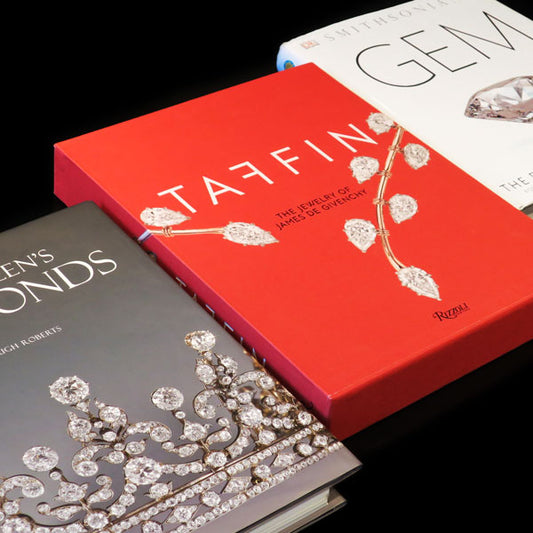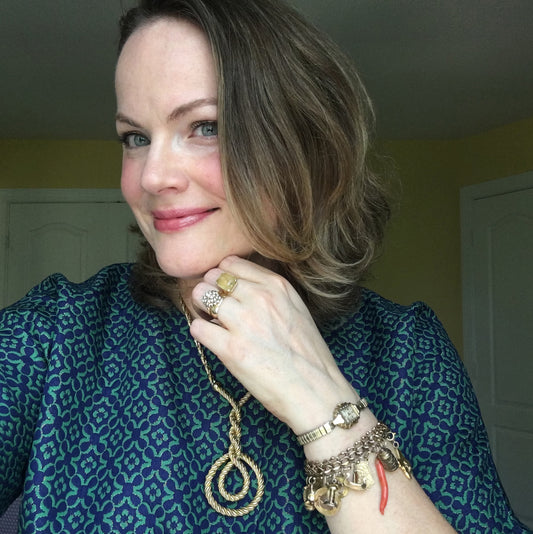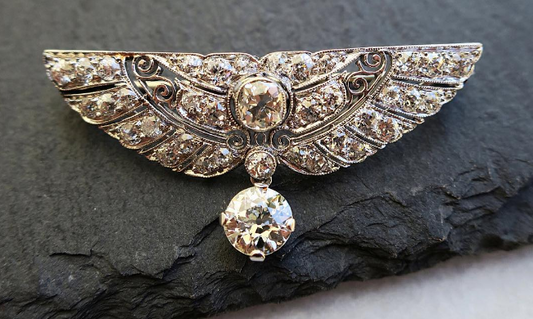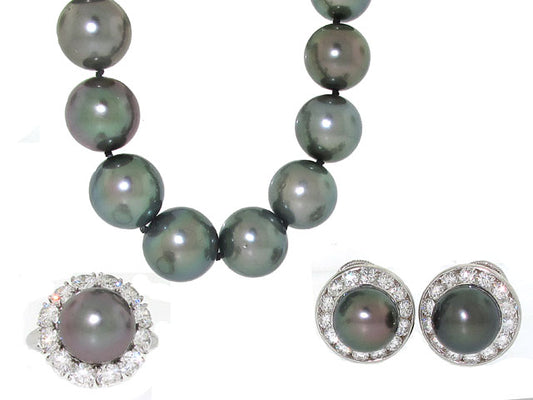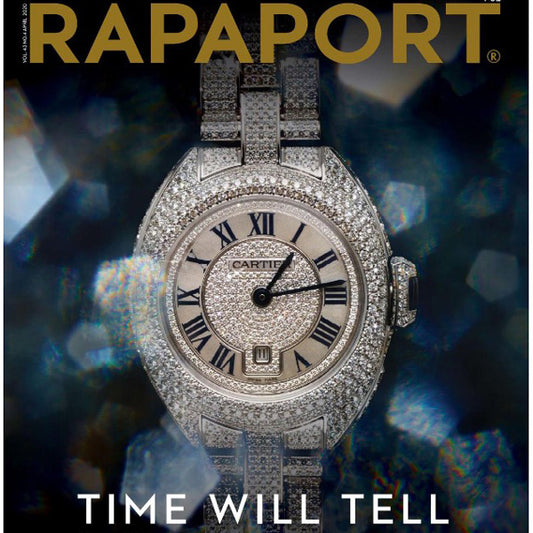Jade jewelry has been highly valued for thousands of years. The term “Jade” actually describes two distinct minerals: Jadeite and Nephrite. Broadly speaking, Jadeite is the more precious of the two, and is used in finer pieces of Jade jewelry. The origin of these terms relates to ancient beliefs associated with the stones which are quite fascinating. It is believed that the term “Jade” comes from the Spanish term “piedra de ijada,” used by the ancient Aztecs and Mayans, which translates to “loin stone.” This refers to the healing powers associated with the stone by these ancient peoples; it was believed that wearing jade near the kidneys or liver cured ailments associated with these organs. The term “Nephrite” likely came from the Latin term, “lapis nephriticus,” meaning “stone of the kidney.”
Though the origins of the term “jade” are relatively recent, jade has been valued by various cultures for thousands of years. It is a very hard gemstone, having a Mohs hardness of about 7.0 where a diamond rates at 10.0, and thus was valued for its use in tools and weapons, in addition to its beautiful appearance. Furthermore, different cultures associated the stone with having healing powers. The Mayans and Aztecs believed jade could cure various ailments, while the Chinese have believed for thousands of years that wearing jade jewelry brings good luck and health. In addition, for the Chinese, the stone is infused with symbolism. White jade means good luck. Green jade brings good fortune. Red symbolizes abundance of life and lavender symbolizes happiness.
Most of the world’s supply of fine jadeite comes from Burma. A certain kind of highly translucent, emerald green jade originally mined by the Burmese, commonly referred to as “Imperial Jade,” was the most expensive kind of jade traded between the Burmese and Chinese, as it was collected by Chinese emperors. The mines which produced this jade have long since been exhausted; however, sellers of jade jewelry often label it as “Old Mine” or “Imperial green jade” to indicate comparable appearance and quality.
The Burmese began bringing jadeite to the Chinese in the mid-eighteenth century, where it quickly became coveted above the native Chinese nephrite. The trade was and remains highly treacherous, as it is very difficult to bring the mined jade boulders through the jungles of Burma which are ridden with bandits and drug traffickers. Once the jade reaches China, it is then bought and sold in a very ritualistic manner. The jade is bid for via a system of secret handshakes, made underneath a cloth or newspaper so as to remain concealed from the other bidders; in other words trading jade is not an amateur task and remains a highly complex, risky and cultural process.
HOW JADE IS VALUED
Jade jewelry is valued according to the three T’s: tone, texture and translucency. Tone refers to the depth or darkness of the color of the jade. Jade comes in a variety of colors, some more valuable than others; and it is the tone or saturation of these colors that further determines the value of the jade. The translation of tone to value is necessarily a somewhat subjective process, but in general the more vivid the color, the more valuable the jade.
Texture refers to the presence of inclusions in the jade in the form of veins, spots, clouds, and so forth. The most valuable jade has no or very few inclusions and even color throughout the piece. While veins in the jade reduce its value, this type of jade is more valuable than jade with cloudy inclusions. The least valuable jade is jade with many inclusions so as to give it an opaque appearance.
Finally there is the translucency of the jade. The two most translucent types of jade are referred to as “water jade” and “honey jade.” Water jade is the most valuable, and is nearly transparent and the presence of any inclusions is readily ascertainable. Next is honey jade, which is also very transparent, but the stone has much more color than the water jade. As the translucence of the jade decreases, so does its value; opaque jade is the least valuable, and the presence of any internal inclusions cannot be determined.
It is important to be wary of dyed jade or jade substitutes in jade jewelry. Many different stones can easily be mistaken for jade, such as emeralds, agate and serpentine. In addition, jade may often be dyed to achieve a more desirable shade, and technologies had advanced to the point of making it very difficult to tell natural jade from dyed jade. Therefore, it is especially important to purchase your jade from a reputable source.




